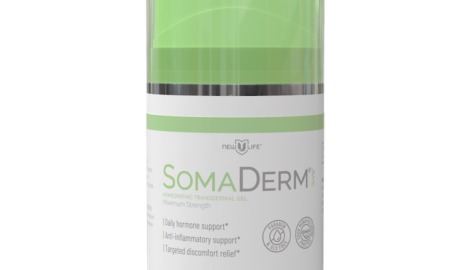My bed and I spend less time together than the experts say we should. Most nights, my head hits the pillow around 11:00 pm, and I’m up—without an alarm—at 5:30 am. That six and a half hours of shuteye puts me behind the seven to nine hours the American Academy of Sleep Medicine and Sleep Research Society recommend for adults. Does it hurt me? Not so I can tell.
I may be a bit of an outlier as far as the guidelines are concerned, but I am by no means alone. Our sleep needs change over the course of our lifetimes—from 17 hours a day as a newborn, to up to 12 hours as a schoolkid, to the seven- to nine-hour benchmark for adults. But those figures are just averages. Plenty of people, like me, get by on significantly less for their age, while others require a good bit more. What is it that makes some folks short sleepers, some folks long sleepers, and others smack-in-the-middle sleepers? A lot of things, as it turns out.
Your sex matters—a little
When it comes to the differing sleep needs of men and women, one of the most commonly cited statistics is that women require more—but only by a tiny bit, about 11 extra minutes a night. The finding comes from a 2013 study in the American Sociological Review that surveyed nearly 73,000 participants in the U.S. Bureau of Labor Statistics’ American Time Use Survey. The sample group included only people in the 18 to 64 age range—eliminating the youngest and oldest respondents, whose sleep needs often fall on the highest and lowest end of the scale—to arrive at the small but statistically significant difference.
The researchers cited a range of factors that might explain the small gap—including the round-the-clock responsibilities of unpaid housework, which women still perform more commonly than men—and few opportunities for catch-up naps during the day.
The American Sleep Foundation reports additional possible explanations, including menstruation, menopause, and pregnancy, all of which can interrupt sleep and lead to women staying in bed a little bit longer to make up for the periodic awakenings. Other findings suggest that women fall asleep a bit faster than men, meaning that they enter their sleep cycle with an edge of a few minutes. And then, of course, there’s the burden of caring for children—especially small children—which falls more heavily on mothers than fathers.
“When you have kids, you’re always dealing with them,” says Dan Gartenberg, an adjunct professor in biobehavioral health at Penn State University and CEO of Sleepspace, a sleep-assistance app. “Women may report having to get more sleep simply because they’re being woken up all the time.” Still, while more studies have been conducted on male-female sleep differences since the one in 2013, they have not turned up anything dramatic. “Honestly, the effect for gender is small,” says Gartenberg.
The wages of insomnia
About one in three adults worldwide experiences insomnia—or the inability to fall asleep or stay asleep—at any given time, according to the Cleveland Clinic. About one in 10 suffer from the chronic form of the condition. known as insomnia disorder, which is defined as three or more nights of sleep problems per week lasting three or more months. Insomnia can occur at different phases of the sleep cycle. So-called initial insomnia involves difficulty falling asleep; maintenance insomnia occurs when you wake up in the middle of the night but are able to go back to sleep; and late insomnia is waking up too early and being unable to go back to sleep. A lot of things can cause insomnia, including anxiety, depression, chronic pain, acid reflux, a family history of sleep problems, and stressful life circumstances that make it difficult to unwind.
By definition, people with insomnia get less rest, which increases their need to stay in bed longer fighting to sleep or finding the time to nap during the day. “If your sleep is very broken up, you’re going to need more of it,” says Gartenberg.
There are several treatments for insomnia. Benzodiazepines and sedative-hypnotics are options, but also dangerous ones, as they can lead to dependency and addiction. What’s more, they lead to poor quality of sleep. “Ambien, for example, is not meant to be used every day because it’s going to reduce your deep sleep,” says Gartenberg.
Other, safer options include such sleep-hygiene strategies as going to bed and getting up at the same time every day; avoiding over-the-counter stimulants like certain cold medicines; limiting TV time or other stimulating activities before bed; and taking a bath, listening to soothing music or meditating in the evening. The goal, says Gartenberg, is to achieve sleep that is “regenerative and consolidated”—restful without medications and, if possible, without interruption. The closer you get to those twin goals, the more your sleep needs will fall back into the recommendations for your age.
The role of sleep apnea
Next to insomnia, apnea—or the periodic cessation of breathing during sleep, leading to micro-awakenings or full awakenings throughout the night—is the most common sleep disorder. “About 20% of the U.S. population has sleep apnea, which is technically defined as literally choking five times an hour or more,” says Gartenberg. “If you have a severe case, you’re choking 100 times per hour.” In addition, he adds, about half of the population who do not meet the technical definition of sleep apnea have suboptimal breathing during sleep, choking two to four times per hour.
There are two types of sleep apnea, each with its own cause. Obstructive sleep apnea occurs when the muscles in the back of the throat relax and collapse during sleep, cutting off breathing. Central sleep apnea occurs when the brain fails to send signals to the central nervous system instructing respiration to take place. Overall, men are two to three times more likely to suffer from apnea than women. About 4% of women have a related condition known as upper airway resistance, that can also disrupt breathing and sleep, according to Gartenberg. That condition occurs in only 1.5% of men.
As with insomnia, apnea can cause people to require more hours of sleep, as they try to make up for the disruptions and awakenings that occur over the course of the night. The worse the apnea is, the more catch-up time may be required. There are multiple treatments for apnea, including weight loss, CPAP sleep masks, implantable devices, and surgery.
Screwy circadian rhythms
Your body is a walking clock, built to respond to the cycles of the day. We awaken as the sun rises, sleep after it sets, and go through peaks and valleys of high and low energy in between—with the greatest highs occurring two to four hours after we wake up and again before the dinner hour, according to Gartenberg. But as technology takes us further and further from the state of nature, our circadian clock is coming unsprung.
“Since the invention of the light bulb, we’re getting the wrong signals based on our circadian rhythms, which is hindering our sleep quality and our ability to have a regenerative night’s sleep,” says Gartenberg.
If the problem began in the late 19th century, it’s being turbocharged in the early 21st. We cocoon ourselves in brightly lighted cities, where 56% of the world’s population lives; work remotely at all hours—no need to follow a nine-to-five schedule if you can wake up, log on, and put in your time whenever you want; and spend our days and nights in front of screens, which bathe us in blue light, a wavelength that suppresses the production of the sleep hormone melatonin. All of this leads to poor-quality sleep and the need for more than the baseline for your age.
It’s not necessary to move out of the city or ditch your electronics to recalibrate your internal clock. Instead, you can nudge it into alignment by imposing a regular structure on your day. Try to wake up at the same time every morning and go to bed at the same time every night, exercise during those morning or early evening peaks, have your meals at set hours, avoid eating dinner too close to bedtime, and power down your phone or tablet an hour or two before sleep.
The role of the genes
It is the rare person who can get by on just four and a half hours of sleep—but those individuals exist. Not only do they need relatively little slumber, they also tend to score higher than average on tests of energy, optimism, and pain tolerance. Those people, known as short sleepers, have been found by researchers at the University of California, San Francisco to have a mutation in seven genes that play a role in regulating sleep and, the studies suggest, mood—though to date they have published papers only on four of them.
“There are many people who think everyone needs eight to eight and a half hours of sleep per night and there will be health consequences if they don’t get it,” Dr. Louis Ptacek, a neurology professor at UCSF and the co-discoverer of the short sleeper genes, told TIME in 2020. “But that’s as crazy as saying everybody has to be 5 ft. 10 in. tall. It’s just not true.”
Still, no one suggests that it’s terribly common to have short sleep written in your DNA. So far, only about 50 families with the short-sleeper genes have been identified.
A few sleep hacks
- Go easy on alcohol and cannabis: Even a little bit of drinking can scramble your sleep—helping you drift off more easily, perhaps, but causing you to awaken more during the night. Additionally, when you have alcohol in your system before bed, you get less rapid eye movement (REM) sleep, the deepest sleep phase. “Alcohol totally wrecks sleep quality,” Gartenberg says. Cannabis, similarly, has sleep-inducing benefits in the early part of the night, but sleep-disturbing effects later.
- Get some variety in your day: One of the reasons babies sleep so much is because they spend their waking hours vacuuming up information about the world. Consolidation of this information happens during sleep, so babies need to conk out early and often to preserve what they’ve learned. That doesn’t change in adulthood—meaning that the more novel experiences you have, the better you might sleep at night. “If you’re riding your bike and follow the same route again and again, maybe instead go a different route,” says Gartenberg. “When we learn and expose ourselves to more information, there’s actually an effect where you get more deep sleep.”
- Figure out your natural sleep cycle. The next time you’re on vacation, take the time to learn about yourself. Rather than setting an alarm every day and dashing off to an activity, try going to bed at the same time for at least three nights running and not setting an alarm at all. Ideally, you will sleep until your body determines it has had enough. “This is a close estimation of what your unique sleep needs are,” says Gartenberg. If you’re sleeping, say, eight and a half hours, you can make sure you get to bed early enough when you get back home so that you can log that much time each night.





